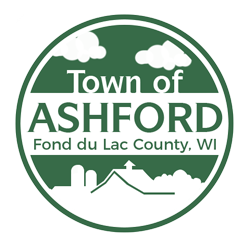Shoreline zoning changes get ready to leave dock
DNR plan would ease limits on property improvements
By Lee Bergquist of the Journal Sentinel
Posted: Jun. 10, 2009
After years of booming construction on Wisconsin lakes, state
officials on Wednesday proposed the first substantial rewrite of
waterfront zoning regulations in four decades.
The biggest change in the closely watched rule package would eliminate
a controversial measure that often has limited property owners from
making improvements to homes within 75 feet of the shoreline.
The Wisconsin Department of Natural Resources also is seeking, for the
first time, to limit the size of impervious surfaces such as driveways
and roofs as a way to slow polluted runoff.
A driving factor is that lakes and rivers that were once dotted with
summer cottages now are filling up with larger year-round residences
and multi-unit complexes.
The DNR predicts all currently undeveloped lakes, not in public
ownership, could be developed in the next 20 years.
Homes, driveways – even lawns – all have an effect on water quality
and aquatic habitat. “The changes we are talking about today are not a
magic bullet that is going to fix all of the problems, but they are a
significant piece of the puzzle,” said Gregg Breese, shore land
program manager with the DNR.
The regulations would represent minimum standards counties would have
to adopt.
Breese noted that many counties already have tougher zoning
restrictions than the DNR. Waukesha, for example, has some
requirements for land along lakes that are stricter than the state’s
standards.
Lake-rich Vilas and Oneida counties also have many zoning regulations
that exceed state minimum requirements, Breese said.
Still, development has caused lakes big problems
Development around Delavan Lake in Walworth County increased 67%
between 1981 and 2005, according to the local lake management
district.
The result is greater storm water runoff and the introduction of
invasive species such as Eurasian milfoil. The decline forced the
community to spend $7 million to restore water quality.
On Big Muskego and Bass lakes in Waukesha County, the local
lake-management district in 2004 estimated that 63% of the non-farm
runoff in the lake was caused by construction site erosion. A
$1 million restoration plan was completed in 2007.
75,000 public comments
The DNR’s zoning regulations have been under review since 2002. Since
2005, they have generated nearly 75,000 public comments. Rules were
proposed in 2005 and 2007, but were never advanced for fear they would
not be supported.
Representatives of the DNR, lake owners, builders and Realtors all
agreed that old variations were needlessly complicated.
While there is sure to be opposition from some property owners,
representatives of the sundry groups voiced their support for the
package during a news conference at Governor Nelson State Park in
Waunakee.
“The biggest thing was the non-conforming structures,” said Tom
Larson, attorney with the Wisconsin Realtors Association.
Since 1968, landowners were prohibited from making improvements on
non- conforming buildings – those within 75 feet of the shoreline – if
the upgrades increased the value of the property by at least 50%.
“This was really confusing, and people didn’t like it,” said Patrick
Stevens, director of regulator affairs with the Wisconsin Builders
Association.
In some cases, buildings were required to be removed.
If the latest regulations are approved, landowners could make big
changes without worrying about the 50% rule.
Instead, they would be required to take other steps to protect the
lake. The zoning requirements would be determined by counties, not the
DNR.
Counties aren’t expected to reimpose the regulation because they often
were put in the position of assessing the value of an expansion or had
to approve requests for variances.
Another big change affecting new construction is limiting the amount
of impervious surface area on a property to 15% of the size of the
lot.
An owner looking to replace an existing roof or driveway would not be
affected, but additions would.
Owners could have as much as 30% of their property covered with hard
surfaces, but they would have to take other steps such as reducing
mowing near the water, installing rain gardens or replanting native
vegetation.
William P. O’Connor, legislative counselor to the Wisconsin
Association of Lakes, said the changes represent 40 years of
experience in protecting shorelines.
“Leaving nature on the shore is critical to maintaining populations of
the familiar creatures – from heron to turtles – that share the
waterfront,” O’Connor said. “They need places to live, too.”
The State Natural Resources Board will consider the measure and take
public comments June 24 in New Richmond. The Legislature also can
review the regulations, if it chooses.
